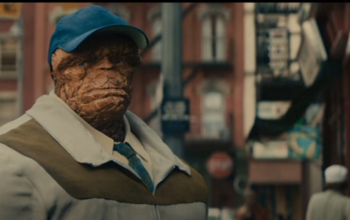
It is no secret that I love Spider-Man. He is my favorite male superhero of all time. So I have decided to create a series of articles based on Spider-Man. If you don’t know who Spider-Man is, I don’t think we could be friends. LOL! But for the purpose of this article, let me enlighten you on both the character and comic origin story.
So first let’s talk about the origin of the comic. Created by the iconic Stan Lee and artist Steve Ditko, Spider-Man made his comic debut in Amazing Fantasy #15 in August of 1962.
Did you know, that Spider-Man almost didn’t happen. I can’t even imagine that! The first Spider-Man story was suppose to be a one-shot experiment. But even the one shot almost didn’t get published. Stan Lee once told reporters “Martin Goodman didn’t want to publish it,” Goodman was convinced that the idea of spiders would be distasteful and a subject readers didn’t want in their comics.
So how did Spider-Man make it into Amazing Fantasy? Well, the comic that Spider-Man debuted in was about to be canceled due to lack of sales. With this knowledge Stan Lee recalls how Spider-Man made his first appearance, “Nobody cares what you put in a book that’s going to die, so I threw in Spider-Man. I featured him on the cover and then forgot about him.”
This story became a sensation, maybe because it pushed the cliches that had been predominant in comics right out the window without a web! (Sorry had to!!)

Stan Lee recalled, “A few months later, we got the sales figures, and that Spider-Man issue of Amazing Fantasy was one of the best selling books we ever had. There were no flies on us, so we put him out in his own title.” Spider-Man got his own comic in March of 1963.
Jack Kirby, had been company’s main artist drawing all of the new characters. That is until Spider-Man. Kirby had drawn several pages of Spider-Man but never completed them. Kirby’s version of your friendly neighborhood Spider-Man were in his bold and dramatic style but Stan Lee wanted something a bit different. He wanted more of an offbeat look for his young superhero. Enter Steve Ditko. Stan Lee asked him to illustrate the initial Spider-Man adventure. Which was actually drawn by Kirby and Ditko together. Stan Lee liked the look that Ditko created. Now Spider-Man had his creator and his artist!
Let’s take a moment to appreciate the ground breaking aspects of Spider-Man in his early days. Shall we?
Spider-Man was the hero but also that teenage sidekick all in one character! This had never been done before! Previous teenage superheroes always had an older mentor and were delegated to being the helper. Not Spider-Man! Marvel’s first editor, Joe Simon, theorized that sidekicks were important because they gave the hero someone to talk to. However, in his brilliance Stan Lee create a Hamlet type character who was fine talking to himself.
Yes that is right, Spider-man talked to himself.

In his first appearance, Spider-Man actually talked out loud to himself but Stan Lee soon adopted the device of the thought balloons to let us hear what our hero was thinking. This eliminated the need for the superhero to have a sidekick to talk to. It just to allow the reader glimpses into their thoughts.
“I used those thought balloons to help the exposition,” says Lee. “I could put interesting thoughts there that weren’t necessarily about what was happening in that particular panel – something to hold the reader’s interest.”
Spider-Man soon became the epitome of The Marvel Age of innovation. Stan Lee used his young superhero to challenge the whole concept of who and what a superhero had to be. Spider-Man was a awkward high school kid. He was sometimes neurotic, compulsive, shy, and wimpy. He just happen to get superpowers. Spider-Man pushes the status quo with his own skepticism of being a superhero but with this youthful eagerness to save the day! He struggled without anyone to really help him find his way, unlike previous teen heroes (think Bucky or Robin even though that crosses into DC)
Peter Parker is a normal person when he isn’t Spider-Man. He gets the flu, he runs late, he isn’t always or hardly ever smooth with the girls, he struggles to pay rent when he gets older. You know he deals with life just like we all do. Except when he isn’t dating or trying to deal with school/jobs, he fights crime. He is the Everyman Superhero! Not rich, not overly good looking. Nothing that makes anyone take strong notice of him. If you met Peter Parker on the street you would probably just pass on by without a second glance. I think one of his appeals to readers is that he could be you! He is never portrayed as perfect instead he is flawed but tries. Teens everywhere related to him.
Spider-Man became the Quintessential Marvel superhero.

Now that you know the comics origin story let’s talk a little about Spider-Man himself and how Peter Parker became the friendly neighborhood Spider-Man.
In the original story back in August 1962, Peter Parker is a rather nerdy bookish high school honor student. He was awkward which made him isolated and not really popular. An orphan, he lives with his elderly Aunt May and Uncle Ben. While attending a science exhibit, Peter is bitten by a radioactive spider. This is how we get Spider-Man! Peter acquires the agility and strength of spider but proportionate to his size. What does a teenager who now has superpowers do? Well, He sews his own suit.. remember not rich and has no older superhero mentor to guide him! He uses his knowledge of science to build his own web slingers and creates his own webbing. At first he doesn’t want to use his powers to fight crime. He’s a kid. He wants to make some money. With his new homemade suit (Inspiring cosplayers everywhere!) and web slingers he becomes a professional wrestler. He gets to wrestle and demonstrates his abilities on television. He has the chance to stop a thief but isn’t concerned with stopping crime. He is going to make some money. However, this decision would change Peter Parker’s life. Every superhero needs a tragic event to propel their character to fight crime. The thief who he didn’t try to catch later robs and kills his Uncle Ben.
Eventually Spider-Man does capture the murderer. But the guilt that he could have stopped the events that took his Uncle Ben’s life cause Peter no peace. He must never let that happen again.
Even though these words have been attributed to Uncle Ben the truth is Stan Lee took to Spider-Man into the realm of self realization.
In the final panel of a Spider-Man’s first story you see Spider-Man as he wanders remorsefully off into the night with Stan Lee’s now famous caption: “With great Power there must also come – great responsibility!”
Okay GeekyKOOL readers I hope you enjoyed this the first article in my For the Love of Spider-Man series. Next time I am going to talk about the other characters that I love from the Spider-Man comics! I also plan on doing one on the villains and then will finish the series with a filmography retrospective on Spider-Man.
Thanks again for reading this GeekyGirlNess, until next time.




